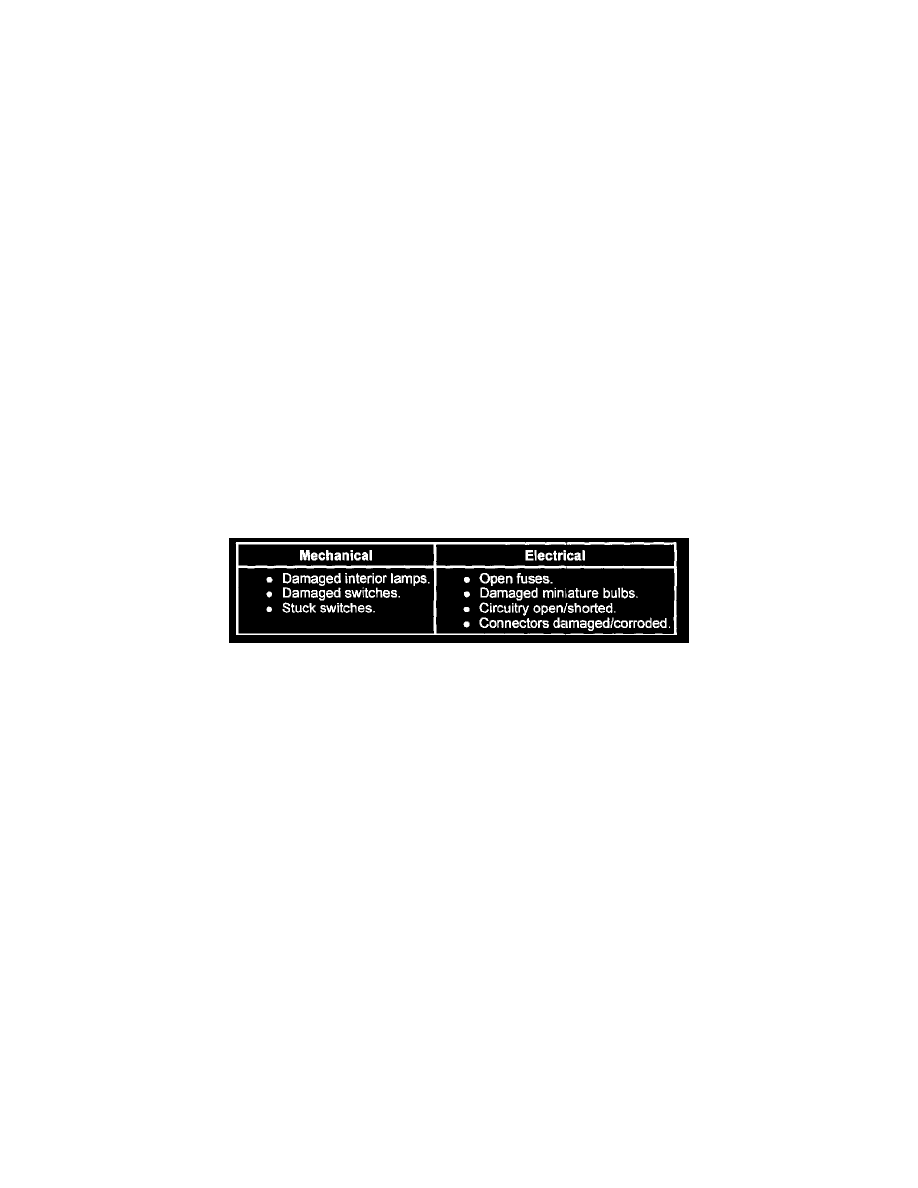Crown Victoria V8-4.6L SOHC VIN 6 (1996)

9. Select year, Vehicle and appropriate engine by rotating dial to highlight selection, then press trigger to select. (If the selected vehicle is not
displayed on first row, then repeat steps 8 and 9. Otherwise, rotate dial to Selected Vehicle top row and press trigger.)
Retrieve/Clear Continuous DTCs
1. Perform New Generation Star Tester Hookup and Vehicle Selection as outlined.
NOTE: The ignition switch must be in RUN position or test will fail.
2. Rotate dial to menu item Diagnostic Data Link and press trigger.
3. Select module to test by rotating dial to highlight module and press trigger.
4. Menu item Diagnostic Test Modes is highlighted. Press trigger.
5. Rotate dial to menu item Retrieve/Clear Continuous DTC, press trigger, then press start (Button 3).
6. Clear individual DTC from selected module, highlight DTC by rotating dial then press Button 8.
7. Clear all DTCs from selected module, press Button 7.
Without Scan Tool
NOTE: Ford DOES NOT provide a procedure to retrieve or clear DTCs other than with the method described in Clearing Trouble Codes / With Scan
Tool. See: Reading and Clearing Diagnostic Trouble Codes/Courtesy Lamps/Clearing Trouble Codes/With Scan Tool
Courtesy Lamps
Inspection and Verification - Courtesy Lamps
1. Verify the customer's concern by operating the interior lamps to duplicate the condition.
Visual Inspection Chart
2. Inspect to determine if one of the mechanical or electrical concerns from the Visual Inpsection Chart apply.
3. If the inspection reveals obvious concerns that can be readily serviced, correct the concern before continuing with Inspection and Verification.
4. If the concern(s) remains after the inspection, use Rotunda New Generation (NGS) Tester 007-00500 or equivalent, connected to the data link
connector (DLC) to retrieve continuous diagnostic trouble codes (DTCs) and to execute Self Test Diagnosucs for the lighting control module.
5. If self test is passed and no diagnostic trouble codes (DTCs) are retrieved, go to the Symptom Chart to continue diagnosis. See: Symptom Related
Diagnostic Procedures/Courtesy Lamps
6. If diagnosis trouble codes (DTCs) are retrieved, go to Lighting Control Module (LCM) Diagnostic Trouble Codes (DTCs) Index to continue
diagnosis.
7. If the lighting control module cannot be accessed by the NGS, go to Pinpoint Test AA. See: Pinpoint Tests/Courtesy Lamps/AA - No
Communication With Lighting Control Module (LCM)
